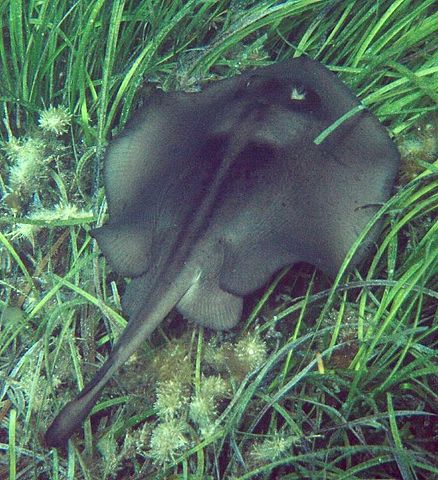"Seagrasses -- a unique group of flowering plants that have adapted to exist fully submersed in the sea -- profoundly influence the physical, chemical and biological environments of coastal waters. They provide critical habitat for aquatic life, alter water flow and can help mitigate the impact of nutrient and sediment pollution." [1]
Local Treasure
Man is changing swiftly marine ecosystems around the world. Seagrass beds are declining not only in the Mediterranean: "Seagrass ecosystems rank with coral reefs and tropical rainforests in their many ecosystem services, yet are drastically declining worldwide as a consequence of both anthropogenic and natural pressures including habitat fragmentation, eutrophication, poor water clarity and climate change stressors." [2] Only 0.2% of the planet's oceans floor is covered by seagrass ecosystems. A precious marine resource is at risk, and untouched seagrass ecosystems are seldom, and thus are a precious resource and source of understanding: "Shark Bay, in remote Western Australia, is one of the last large seagrass ecosystems virtually untouched by mankind. Almost 800 km (500 miles) north of Perth, Shark Bay's remote location and small human population have protected it... Here, where populations of tiger sharks, sea turtles, dolphins, and sea cows thrive, the Shark Bay Ecosystem Research Project is endeavouring to determine how this system works so we will be able to make recommendations about how to protect and restore other marine communities." Possibly to learn too about ecosystem services of inhabitants of seagrass beds that mitigate pollution: "Little clams living in the soil of seagrass beds consume toxic sulfides that accumulate in the silty sediments and turn what should be a toxic soup into a healthy aquatic environment where communities of fish, clams and shrimp thrive." [2]
Global Benefit
Seagras ecosystems link into global carbon cycle. The carbon cycle is a biogeochemical cycle of the earth in its own importance. It is interplaying with the
biogeochemical
cycles of other elements such as nitrogen or phospors. In Earth science, a biogeochemical cycle is a web of pathways by which a chemical element moves through biosphere, lithosphere, atmosphere, and hydrosphere of the Earth. The cycle combines sources and sinks and matter is repeatedly exchanged between them.
 |
| ...and rock cycle. |
About 30,000 metric tons of Carbon per squarekilometer (C/sq. km) is stored in your typical forest. Seagrass ecosystems can store up to 83,000 metric tons of C/sq. km. Part of the carbon being stored since thousands of years in the soils below them. Seagrass meadows store ninety per cent of their carbon in the soil and continue to build on this indefinitely.
Despite their limited geographival range they account for more than 10% of carbon sequestered by the ocean per year. The greatest concentration of carbon found was in the Mediterranean where seagrass meadows stored carbon many metres deep.
...end of seagrass?
 |
| Stingaree in seagrass |
However if seagrass meadows are restored they can effectively and rapidly reestablish storing carbon. They also are providing then again a range of other ecosystem benefits, including water quality protection and important biodiversity habitat. "In spite of this, the level of awareness is low and management ineffective. Seagrass research is fragmented and there is little integration between researchers and coastal zone managers." [3 This seems to be a doomsday's arrangement - low awarness, ineffective management, fragmented research and little interaction.
p.s. Seagrass is also a fiber that can be used.
p.s. Seagrass is also a fiber that can be used.
Martin.Mundusmaris@gmail.com
info@mundusmaris.org
[1] quote from Science Daily; [2] from PhysOrg 12th June, "Little clams play big part in keeping seagrass ecosystems healthy, new study finds" by D. Hesterman; [3] Project, Seagrass productivity: from genes to ecosystem management, quote; The text is based on: The study 'Seagrass Ecosystems as a Globally Significant Carbon Stock,' published in the journal Nature Geoscience (Nature Geoscience (2012)] which provides further evidence of the important role the world's declining seagrass meadows have to play in mitigating climate change.


No comments:
Post a Comment